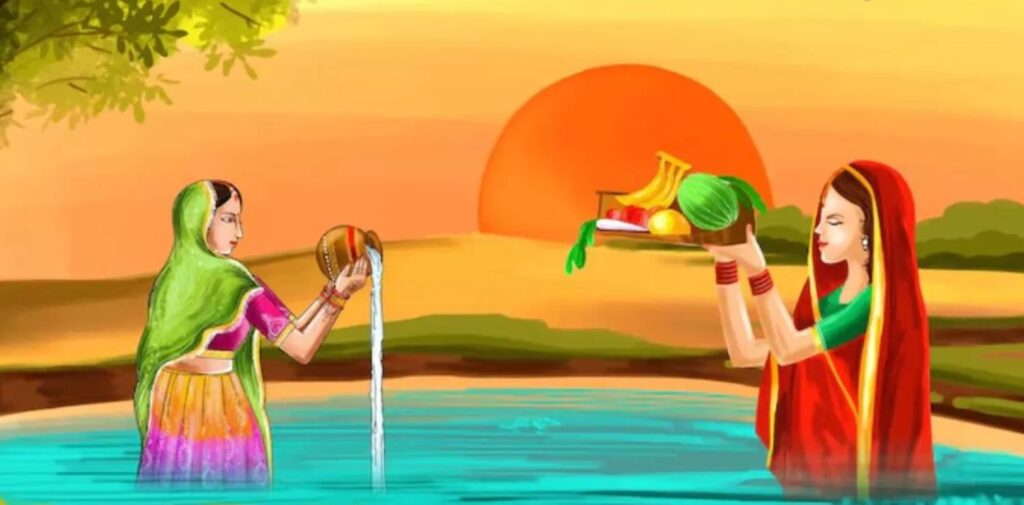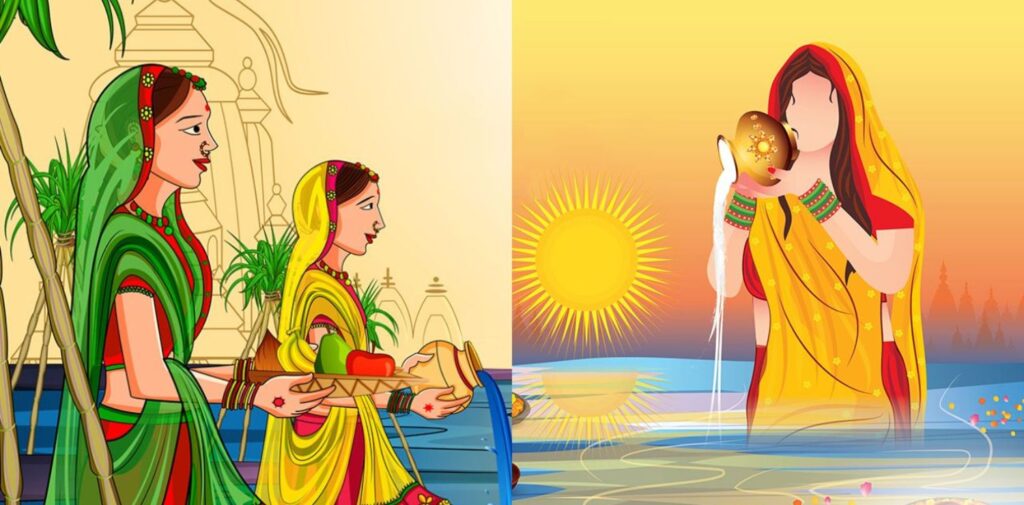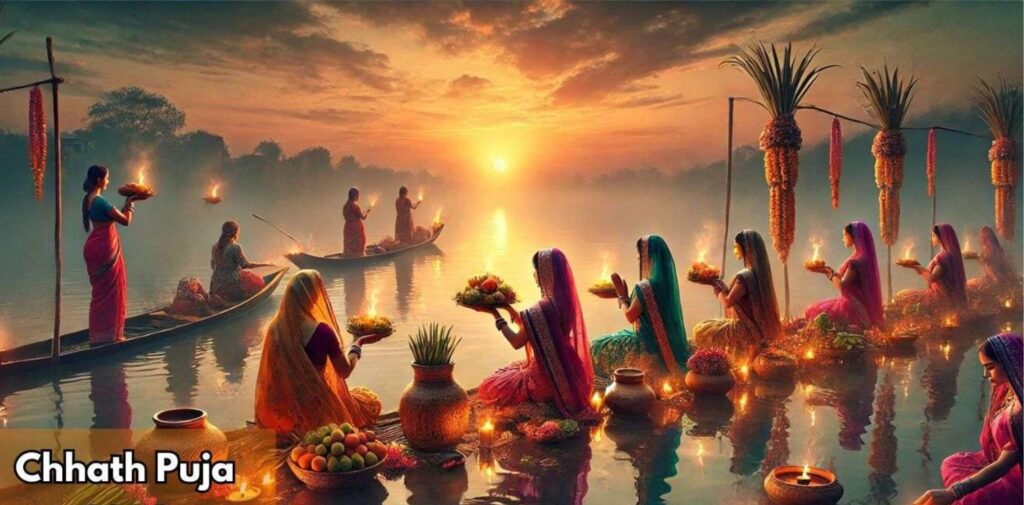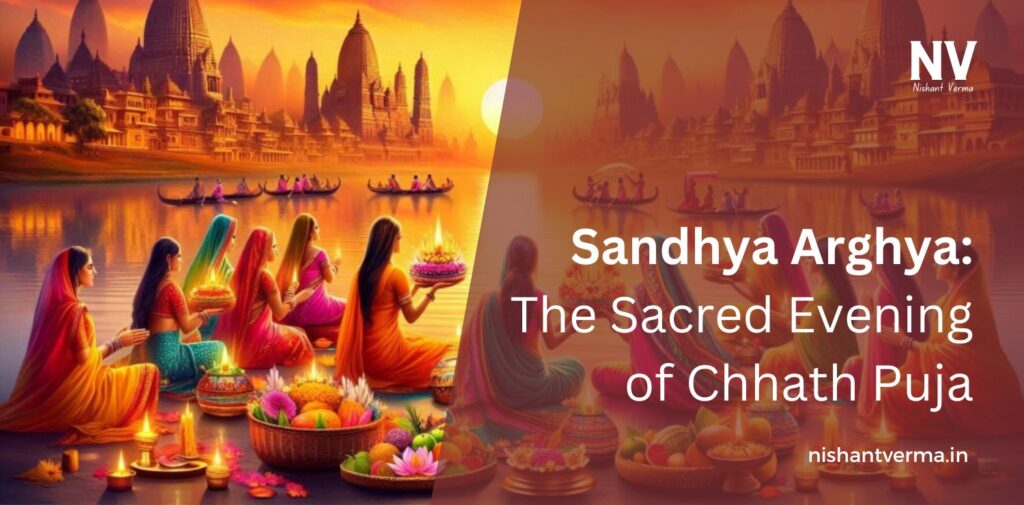Chhath Puja is one of the most significant festivals celebrated in the northern parts of India, particularly in Bihar, Uttar Pradesh, and Jharkhand. The festival is dedicated to the Sun God, Surya, and is observed by devotees to seek blessings for health, prosperity, and the well-being of family members. It spans over four days, each having its rituals and significance. Among these, the third day of Chhath Puja is particularly special—it is known as Sandhya Arghya, and it marks an important phase in the celebration.
What is Sandhya Arghya?
The term “Sandhya” refers to the evening, and “Arghya” means an offering of water, fruits, and other items to the Sun God. So, Sandhya Arghya is the ritual of offering Arghya to the setting Sun at dusk on the third day of Chhath Puja. The offering is made with utmost devotion and sincerity, as it is believed to bring divine blessings and ward off negativity. Devotees believe that this ritual has the power to purify the mind, body, and soul, and it strengthens their bond with the divine forces.

The Significance of Sandhya Arghya
Sandhya Arghya is a key moment in the Chhath Puja because it is performed when the Sun is setting, marking the transition between day and night. The Sun is considered a symbol of life, vitality, and prosperity, and by offering Arghya at this time, devotees seek the Sun’s blessings for long life, good health, and success. In addition to this, the ritual is believed to offer peace and harmony to both the individual and the community.
Preparations for Sandhya Arghya
The day leading up to Sandhya Arghya is marked by significant preparations. Devotees fast throughout the day and do not consume any food or water. They engage in a period of purification, both physically and spiritually, preparing themselves for the ritual later in the evening. The preparations include:
- Cleaning the Home and Surroundings: The environment plays a crucial role in Chhath Puja. Devotees clean their homes thoroughly, ensuring that the area is pure and free from any negativity. This includes cleaning the kitchen, utensils, and the space where the Arghya will be offered.
- Arranging Offerings: The offerings for Sandhya Arghya include sugarcane, fruits (such as bananas, apples, and pomegranates), coconut, and other items that are considered sacred. The offerings are usually placed in a basket made of bamboo or leaves, called “Paatal” or “Thali.”
- Preparing the Ritual Area: The ritual is performed near a river, pond, or any water body, as it is believed that water represents purity and is necessary for the purification of one’s soul. If a natural water body is not available, a small artificial pond or a place with clean water is also suitable.
- Lighting Diyas (Oil Lamps): Small clay lamps, known as diyas, are placed around the ritual area. These diyas are lit in honour of the Sun God and to invite positive energy into the environment. The soft glow of the diyas adds to the spiritual ambience of the evening.

The Ritual of Sandhya Arghya
As dusk falls and the Sun begins to set, the ritual of Sandhya Arghya begins. The devotees, dressed in traditional attire, gather near the water body to perform the ceremony. The women, known as “Vratin” (those observing the fast), stand in knee-deep water with their offerings. The ritual proceeds as follows:
- Offering Arghya to the Setting Sun: The devotee holds a copper or brass vessel filled with water and offers it to the Sun while chanting prayers and mantras. This is the key act of the ritual. It is believed that offering Arghya to the Sun during this time will remove all obstacles in one’s life and bring health and wealth to the family.
- Reciting Chhath Prayers and Mantras: As the Arghya is offered, devotees chant various prayers dedicated to Surya (the Sun God). Some of the most popular mantras include:
- “Om Suryaya Namah”
- “Adityaya Chandraaya Vishnu”
- The repetition of these sacred mantras is thought to enhance the spiritual power of the ritual.
- Prayers for the Family: Devotees pray for the health, prosperity, and happiness of their family members. The Sun God is believed to have the power to bestow strength, vitality, and protection, so this offering is considered a way of showing gratitude and asking for blessings.
- Standing in Water: The ritual requires the devotees to stand in water, which symbolizes purification and the washing away of sins. Water, in Hinduism, is often regarded as a sacred element that can cleanse both the body and soul. It is believed that standing in the water during this time intensifies the spiritual energy and brings positive effects.
- The Final Offerings: After the Arghya is offered, the devotee then offers the remaining items (fruits, sugarcane, etc.) to the Sun and prays for the well-being of their family. This is done with the belief that such offerings please the Sun God and will lead to a better and more prosperous future.
- Breaking the Fast: The fast that has been observed throughout the day is broken after Sandhya Arghya, but the devotees do not eat immediately. The fast is traditionally broken only after completing the evening prayers and after offering Arghya to the Sun. Only simple food items like prasad (holy food) are consumed, which are offered as a sign of gratitude.

The Spiritual Importance of Sandhya Arghya
Sandhya Arghya is much more than just a physical offering—it is deeply spiritual. The act of offering Arghya at dusk signifies the end of a day and the beginning of a new phase in life. It symbolizes surrender, humility, and devotion, as devotees express their gratitude for the Sun’s life-giving energy.
One of the core beliefs associated with Sandhya Arghya is that it is an act of purification. As the Sun sets, it marks the closing of one chapter and the anticipation of a new beginning. The fasting, chanting of mantras, and offering of Arghya are meant to clear away any negativity and create space for positive energies to flow into one’s life.
Conclusion
The third day of Chhath Puja, or Sandhya Arghya, is a crucial part of this vibrant and deeply spiritual festival. It is a time for offering respect, gratitude, and prayers to the Sun God for his blessings. The rituals performed during this day are not just acts of devotion but are also symbolic of cleansing, renewal, and spiritual elevation. Whether it’s the early morning Arghya or the evening one, each ritual during Chhath Puja deepens the connection between the devotee and the divine.
Through the offerings, the prayers, and the fasting, devotees hope to purify themselves and their surroundings and invite prosperity and good health into their lives. Sandhya Arghya, with its spiritual significance and intense devotion, remains one of the most powerful moments of the Chhath Puja festival.




